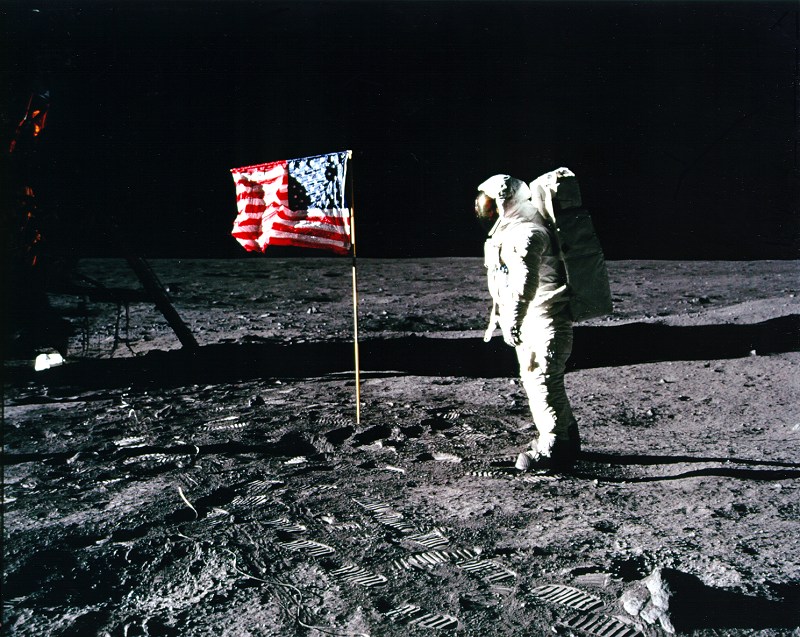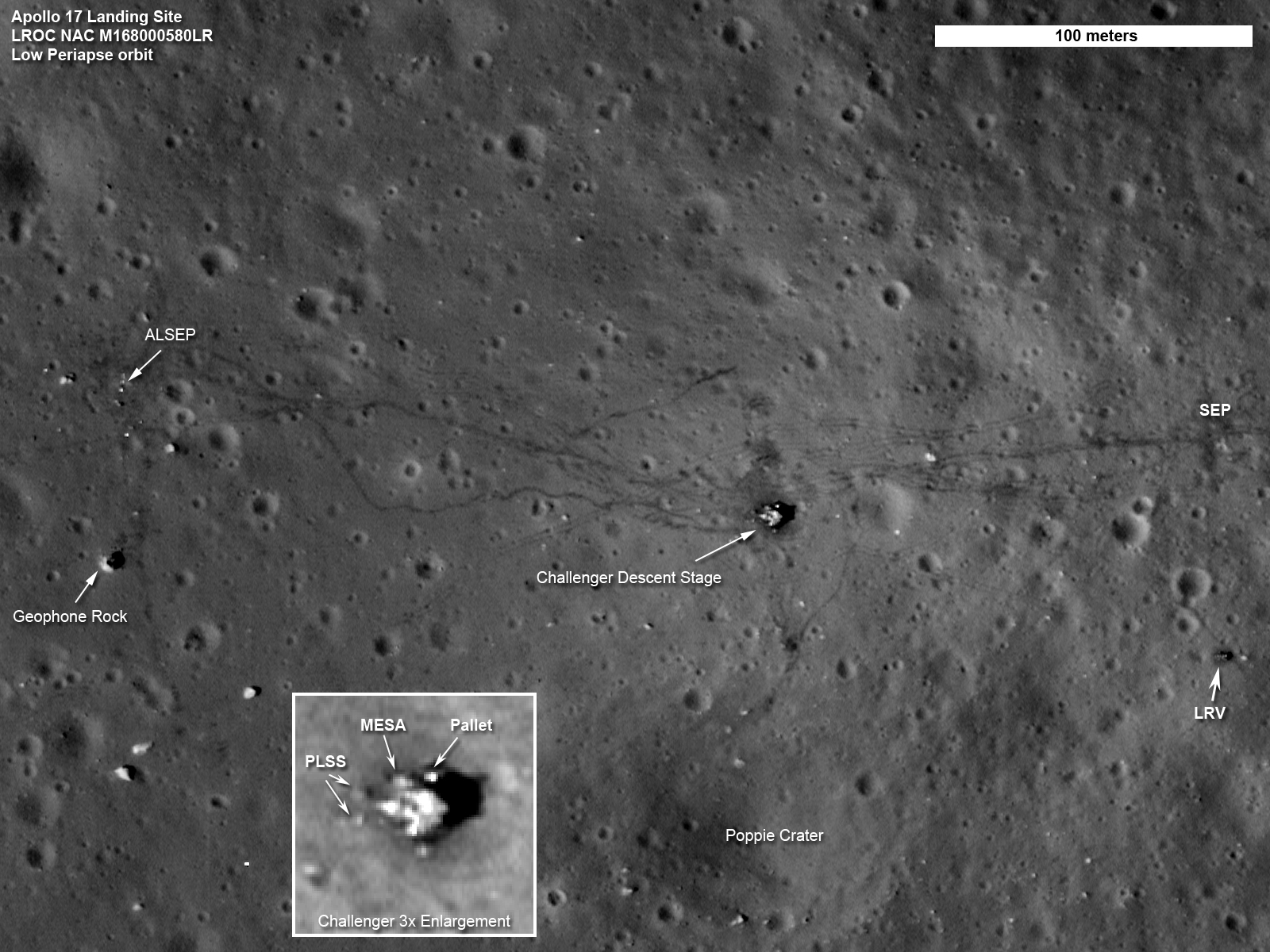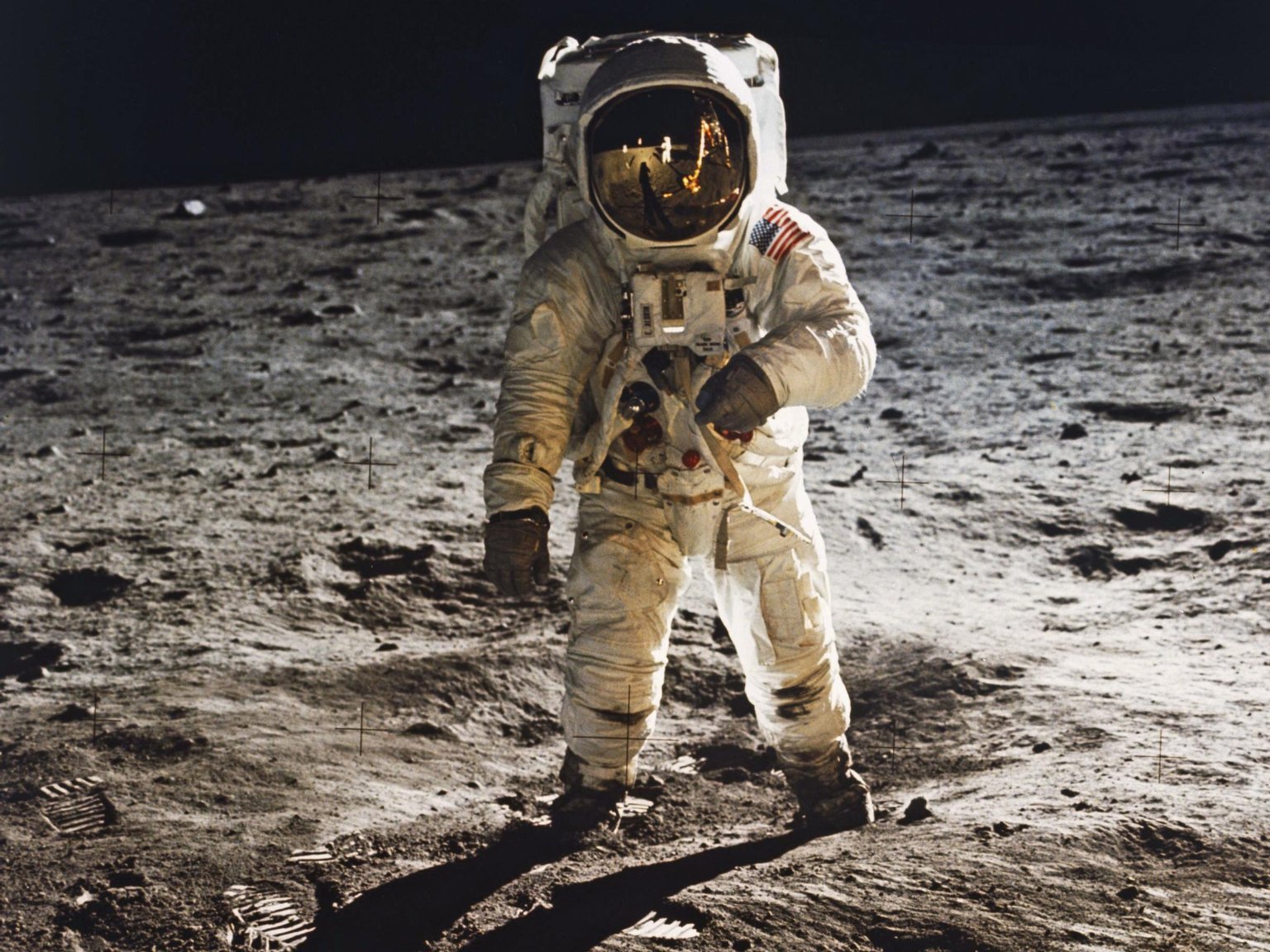
NASA Sets Guidelines to Preserve Apollo Moon Landing Sites

LAS CRUCES, New Mexico — NASA has begun drafting guidelines to protect the Apollo 11 and Apollo 17 landing sites, listing them as off-limits, and including ground-travel buffers and no-fly zones to avoid spraying rocket exhaust or dust onto aging, but historic, equipment.
Robert Kelso, NASA’s director of lunar commercial services at Johnson Space Center in Houston, has taken a hard look at future revisits to the Apollo sites and how to protect U.S. government artifacts on the moon.
Kelso has carved out a set of guidelines intended to safeguard the historic and scientific value of more than three dozen "heritage sites" on the lunar surface.
The report, which was released on July 20, is titled "NASA’s Recommendations to Space-Faring Entities: How to Protect and Preserve the Historic and Scientific Value of U.S. Government Lunar Artifacts." [Photos: NASA's Apollo Moon Missions]
A greater urgency for guidelines has been sparked by the Google Lunar X Prize’s offer of $20 million to any private team that lands a robotic rover on the moon’s surface. An additional $4 million has been offered for any team that snaps pictures of artifacts near or at the Apollo landing sites.

Key question
For Kelso, a key question is: "As the small commercial landers make preparations for possible visits to these historic sites, how do we protect these culturally significant sites from damage so that we can inspect them historically and scientifically?"
Breaking space news, the latest updates on rocket launches, skywatching events and more!
The recommendations listed by NASA are intended to apply to U.S. government artifacts on the lunar surface, such as:
- Apollo lunar surface landing and roving hardware;
- Unmanned lunar surface landing sites (e.g., Surveyor robotic landing sites) and impact sites, such as those of NASA's Ranger spacecraft, as well as the Lunar Crater Observation and Sensing Satellite (LCROSS) that slammed into the moon in October 2009;
- U.S. government experiments left on the lunar surface, tools, equipment, miscellaneous moonwalking gear; and
- Specific indicators of U.S. human, human-robotic lunar presence, including footprints and rover tracks.
Archaeological input
A recognized leader in the emerging field of space heritage and archaeology is Beth O’Leary, an anthropology professor here at New Mexico State University in Las Cruces.
O’Leary has spent more than a decade working with historians and archaeologists researching how to study and curate human artifacts on the moon. [Photos: Our Changing Moon]
Given a small grant from NASA and the New Mexico Space Grant Consortium, O’Leary spearheaded work through a Lunar Legacy Project that investigated protection of the Apollo 11 landing site.
“There is a need for more archaeological input into the process of protecting what is certainly humanity’s most extraordinary series of events that led us off the Earth and onto the Moon,” O’Leary told SPACE.com.
The recent capacities of NASA’s Lunar Reconnaissance Orbiter (LRO) — now circling the moon — has demonstrated that the probe could be used by archaeologists as an important remote sensing tool for identifying and mapping historic lunar sites.

Keep-out zones
O’Leary said that the NASA guidelines create a series of keep-out zones and boundaries around the historic artifacts and features at all Apollo sites. Apollo 11 and Apollo 17 are acknowledged as having special historical and cultural significance, she said.
Those two locales are treated as unique by prohibiting visits to any part of these sites, and all future visiting vehicles would remain beyond the "artifact boundaries" of each entire site.
"This provides a robust zone of protection around these two sites," O’Leary said.
In the NASA study — for hopper configuration landers that are able to perform "low-altitude"/tangential fly-bys of identified sites — special guidelines have been written to ensure negligible plume interactions at the surface.
High heritage value
"For me, the NASA document represents a giant leap for lunar historic preservation," O’Leary explained. "NASA references its ownership of its lunar hardware and the need for protecting what it calls 'witness plates' or 'lunar assets' — those significant artifacts it created in the past that are now on the moon. This is a critical first step and many more have to follow, but for the first time NASA formally recognizes the heritage value of Apollo 11 and other extraordinary lunar sites."
The NASA report also recognizes there have been no human impacts to the sites, which are in pristine, undisturbed condition except for the effects of the space environment.
"Importantly, it recognizes that future missions can disturb or change the earlier lunar sites in ways that scientific and historic information can be lost," O’Leary said. Also, some of the sites are still active and continue to provide data — such as Apollo retro-reflectors used to measure the distance between the Earth and moon via laser ranging.
"It was time for a preservation strategy," O’Leary said.
Leonard David has been reporting on the space industry for more than five decades. He is a winner of this year's National Space Club Press Award and a past editor-in-chief of the National Space Society's Ad Astra and Space World magazines. He has written for SPACE.com since 1999.
Join our Space Forums to keep talking space on the latest missions, night sky and more! And if you have a news tip, correction or comment, let us know at: community@space.com.

Leonard David is an award-winning space journalist who has been reporting on space activities for more than 50 years. Currently writing as Space.com's Space Insider Columnist among his other projects, Leonard has authored numerous books on space exploration, Mars missions and more, with his latest being "Moon Rush: The New Space Race" published in 2019 by National Geographic. He also wrote "Mars: Our Future on the Red Planet" released in 2016 by National Geographic. Leonard has served as a correspondent for SpaceNews, Scientific American and Aerospace America for the AIAA. He has received many awards, including the first Ordway Award for Sustained Excellence in Spaceflight History in 2015 at the AAS Wernher von Braun Memorial Symposium. You can find out Leonard's latest project at his website and on Twitter.
